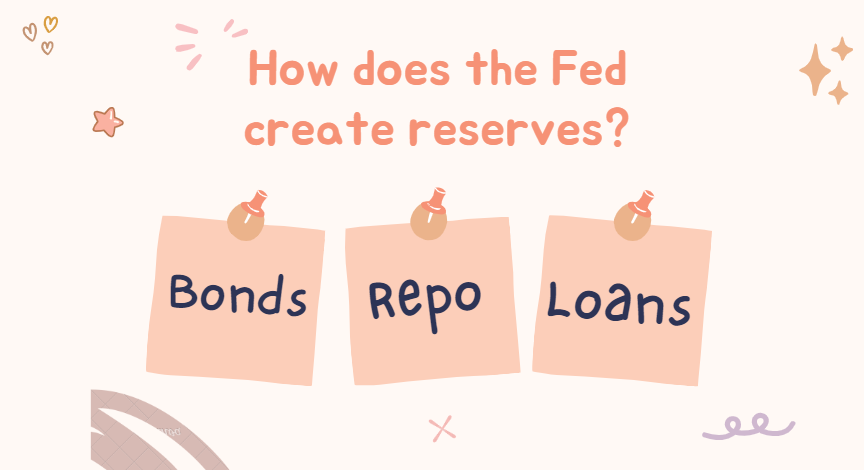Creation, Destruction and Sterilization of Reserves on the Fed Balance Sheet
Creation, Destruction and Sterilization of Reserves on the Fed Balance Sheet #ReserveBalances #Fed #CreationReserves #DestructionReserves #SterilizationReserves
As the Federal Reserve continues to navigate the intricate landscape of monetary policy, the creation, destruction, and sterilization of reserves on its balance sheet play a crucial role in maintaining stability and managing economic fluctuations. This interplay between these three processes is a complex undertaking that requires careful consideration and strategic decision-making. In this article, we will explore the intricacies of the creation and destruction of reserves, as well as the sterilization techniques employed by the Federal Reserve to maintain balance in the financial system. By delving into these essential elements, we aim to provide a comprehensive understanding of how the Fed manages its balance sheet and the impact it has on the economy as a whole.
Fed’s Assets
On December 7, 2023, the Assets of the Fed Balance Sheet are as follows.
The most important items of the asset side (7 December 2023) are these items.
Securities held outright : 7.2 trillion dollar
Loans : 123 billion dollar
Repurchase agreements : 30 million dollar
Fed’s Liabilities
The most important items of the liabilities’ side (7 December 2023) are these items.
Currency in circulation : 2.3 trillion dollar
Reverse repurchase agreements : 1.1 trillion dollar
U.S. Treasury, General Account : 682 billion dollar
Other : 159 billion dollar
Reserve balances with Federal Reserve Banks : 3.5 trillion dollar
How does the Fed create reserves?
There are three ways:
1- It buys bonds directly from the market.
2- Repo transactions.
3- It gives loans.
You can track these ways from the following link. Fed publishes “the factors affecting reserve balances” in every week.
The graph below tells us how much gross reserves have increased since 2009. The reason I say gross is that we will soon see the factors that reduce reserves. Then we will see the net of the two data in the reserves account. Since then, gross reserves have increased by 7 trillion.
The graph below tells us how much gross reserves have declined since 2009. Reserve draining (and destroying) factors have drained 3.5 trillion in reserves since 2009.
As a result, reserves have increased by about 3.5 trillion since 2009.
What is the source of the CHANGE in the upward trend in reserves? Now let's take a look at the main reserve creator on the asset side!
This graph shows that the main reserve creator is the “securities held outright”. Fed buys the securities and creates the reserve balances.
How does the Fed destroy reserves?
There are three ways:
1- It sells bonds directly to the market.
2- It increases the amount of money in circulation.
3- It does not open new repo auctions at the end of the repo date.
Here, except for the repo small repo intervention in early 2009 and the repo intervention in September 2019, there is nothing we can say about repo.
We know that bond purchases are continuous and no bonds are sold.
That leaves the amount of money in circulation. Since 2009, 1.5 trillion money has been printed. This amount of reserves has also been destroyed.
How does the Fed sterilizes reserves?
The most important ways:
1- With the increase the Treasury account (Treasury borrows or collects taxes)
2- With the increase in the Reverse Repo item
3- With the increase in the Repo transactions with foreign central banks
Since 2009, the most important factor absorbing reserves has been the reverse repo (RRP), followed by treasury accounts (TGA) and finally repo transactions with foreign central banks (FIMA). The FIMA repo facility allows foreign central banks and other foreign monetary authorities to temporarily raise dollars by selling U.S. Treasuries to the Federal Reserve's System Open Market Account and agreeing to buy them back at the maturity of the repurchase agreement.
CONCLUSION
Since 2009 until today (07 December 2023), we have analyzed the factors that increase reserves and the factors that decrease reserves.
When we get to the sub-items, we have seen that the dominant factor that increases reserves is bond purchases, the dominant factor that destroys reserves is the increase in money in circulation and the most important factor that absorbs reserves is reverse repo.
Engin YILMAZ (Veridelisi)
Sources:
https://www.federalreserve.gov/releases/h41/current/
https://fred.stlouisfed.org/release/tables?rid=20&eid=1193943
https://fred.stlouisfed.org/graph/?id=WOFSRBRBC,# [Assets: Other Factors Supplying Reserve Balances]
https://fred.stlouisfed.org/graph/?id=WTFORBAFL,# [Liabilities and Capital: Other Factors Draining Reserve Balances: Total Factors, Other Than Reserve Balances, Absorbing Reserve Funds]
https://fred.stlouisfed.org/graph/?id=WRBWFRBL,# [Liabilities and Capital: Other Factors Draining Reserve Balances: Reserve Balances with Federal Reserve Banks]
https://fred.stlouisfed.org/graph/?id=WCICL,# [Liabilities and Capital: Other Factors Draining Reserve Balances: Currency in Circulation]
How does the Fed determine the market interest rate?
The Federal Reserve, also known as the Fed, plays a crucial role in determining the market interest rate. By adjusting the federal funds rate, the interest rate at which banks lend each other money overnight, the Fed influences borrowing costs throughout the economy. This, in turn, affects borrowing rates for businesses and individuals, impacting lendin…




















